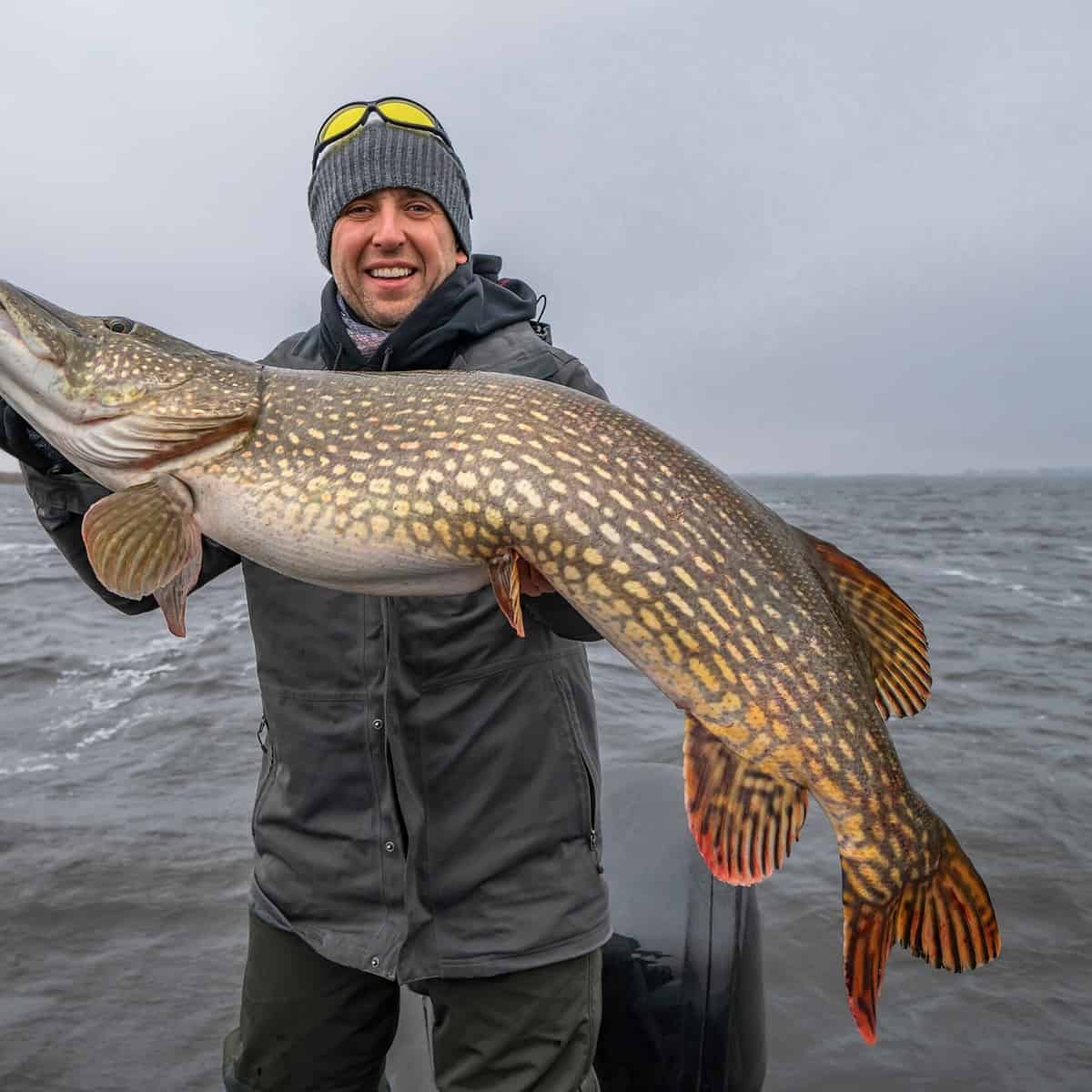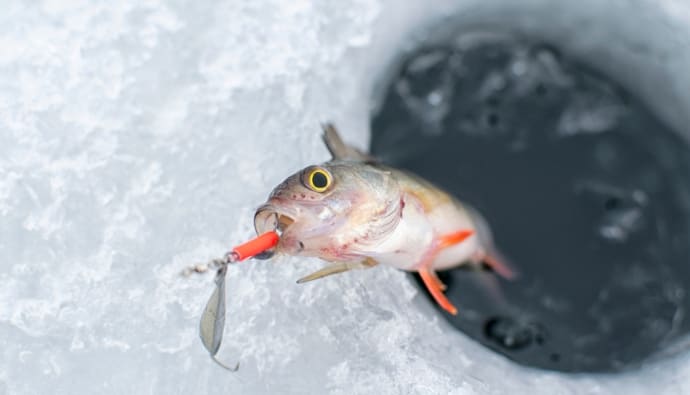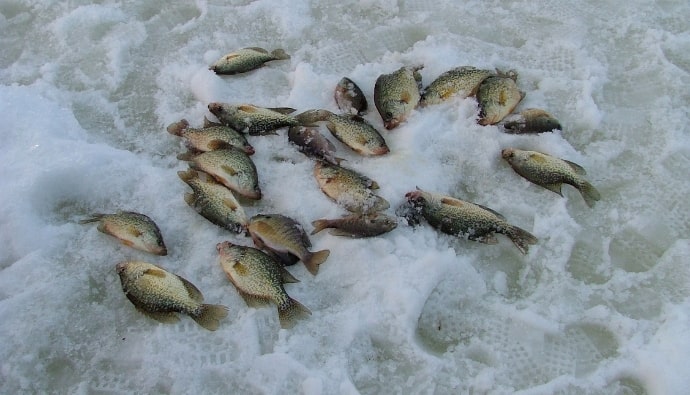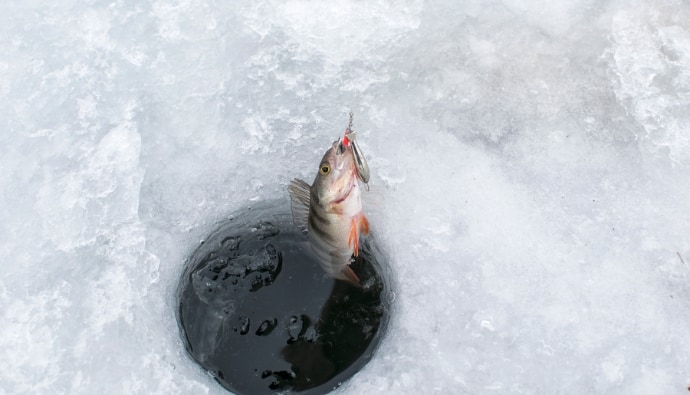If you are looking for winter activities you could do with your friends and family, how about trying out ice fishing? During winter, schools of fish are easier to angle since the weather makes them move at a slower pace. But if you want to test your fishing capabilities this winter, try northern pike ice fishing!
For most anglers, the Northern pike is one of the most challenging fish to angle during the winter season. They’re often located in frozen freshwater lakes and rivers and are angler favorites.
Nevertheless, If you want to learn all about pike ice fishing, continue reading this article for some tips and tricks!
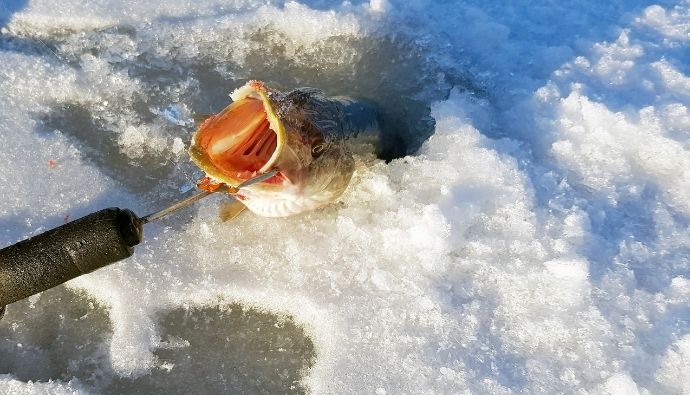
Ice Fishing for Pike: Equipment You Need
Northern pikes get aggressively hungry, especially during the winter. To successfully reel one, you have to know the proper ice fishing equipment and method.
Nonetheless, your equipment will help you strategize on how to angle your very first pike!
Light Rod and Reel
This equipment involves the use of your conventional angling rod and reel. It’s great for live or dead bait to catch northern pike.
When you plan to try out using a conventional angling rod, remember to use a long fishing line, as this helps to cast your lure to the bottom of the water.
You get to move it up towards the water column with long fishing lines when you don’t get any bite at the bottom. As you hold the fishing line, move it steadily and slowly to mimic how a distressed fish moves.
Here are our top recommended best fishing reels.
Tip-ups
Using tip-ups has been a famous method for anglers in catching northern pike during winter. It’s mostly suitable for big pike and involves using different tilts that have been proven to angle monster fish effectively.
The common kinds for northern pike should include a base, a spool for your angling line, and a bite indicator or a flag. Using tip-ups allow anglers to angle for more fish in one hole.
Anglers recommend using a braided line with at least a 30-pound test or lines made of polyester to get more northern pike.
These are durable angling lines that will not tear or rip apart as you reel the pike in. Thus, you should have enough patience when using this because it could take hours before a pike bites.
Multi-pronged Spears
You can also use multi-pronged spears to stab the pike once it shows up on the surface of the ice-angling hole. For safety purposes, attach a string to your spear so that it’s easily retrievable when you miss.
Using drills, anglers create a hole for ice angling and drop chum or concentrate insect larvae inside. The chum helps attract big fish to swim up toward the surface of deep holes.
Best Location and Time for Ice Pike Fishing
Locating northern pike for ice fishing is helpful so that you’d know where to set up your angling spot.
Northern pike commonly sticks to different structures in bodies of water to look for their meals. These structures include breaks, points, humps, and rock piles.
When you plan to angle in shallow water, note that pike swims mid-depth but spend most of their time at the bottom in deeper water. Pike are also abundant in shallow water with weed edges during the start of winter.
They commonly feed on bluegill, panfish, suckers, and shiners. They stay there until the water becomes too cold to handle, then they move into deeper water.
During mid-winter, the bite commonly slows down, and several anglers stop angling for northern pike for a while.
However, if you are persistent, you can always try to angle for pike during this time because it’s usually when big pike can be caught. It may be challenging to locate them, but it’s certainly worth it when you finally obtain a big fish!
Best Lures for Ice Fishing
Effective lures can also help anglers with pike angling. Nonetheless, you have to choose the most suitable lure you can use to make it easier to angle big pike. The best types of lures for anglers are jigs, plugs, and spoons.
Jigs
Jigs, effective lures for panfish and walleye, are among the angler favorites for northern pike. When you try out using jigs, choose larger sizes at around three to four inches in length. Some of the most famous jigs for ice angling are Bro Bug Jig and Marmooska Jig.
Here are some of the best ice fishing lures and jigs we recommend.
Spoons
Spoons are also one of the top favorites of most anglers when fishing for northern pike. Because spoons are heavy, they can get down into deep water quicker. Spoons also produce effective flashes and vibrations to lure the pike’s attention.
When choosing spoons, it’s best to choose those that can ideally resemble local species. The best spoons available are Katmaster, Swedish Pimple, Flutter Spoon, and yellow perch patterns.
Plugs
Just like spoons, it’s also recommended to choose plugs that can resemble local forage species. One of the go-to lures of anglers is the Rapala Jigging Rap because it effectively catches multiple pikes.
Other plugs with good presentation in catching northern pike are the Chubby Darter, Golden Shiner, and Live Target.
Best Baits
A visit to your local bait shop will help you get the best kinds of bait for angling big pike. Many anglers assume that live baits are more suitable to use in catching pike than dead ones.
However, other anglers argue that since pikes are predators or scavengers, they prefer eating freshly killed bait fish.
A dead bait you can use is a sucker, alewife, cisco, shad, or goldeye. If you prefer live bait, frozen minnows are your best bet to obtain a big pike.
Ice Angling Techniques
Anglers use two basic techniques when angling for pike on ice: jigging and using tip-ups. Many anglers suggest combining the two techniques for a higher chance of successful angling.
Jigging
Because pikes are very aggressive because of their hunger during winter, they prefer larger meals. With this in mind, it’s recommended that your jigs, spoons, or plugs are at least 3 inches long to work best.
The best setup is using a medium ice angling rod with either a 10-pound monofilament or fluorocarbon line or a braided one that weighs at least 20 pounds when using artificial lures.
Whichever angling line is used, don’t forget to hook a good snap swivel at the end.
When you’re prepared and set up, drop the lure slowly and steadily to the desired depth in feet increments. Thus, as you reach into deep water, you can stop for a while before going again. Doing more strikes can get the pike’s attention.
Tip-up Angling
Using tip-ups is a simple but very effective method for ice angling for big fish. When using a tip-up, don’t forget to rig them with freeze-resistant coated lines.
Anglers commonly use Tip-ups with live baits such as suckers, minnows, and shiners. You can hook dead bait such as frozen herring and mackerel when pikes are less active and passive.
Combining the Two Techniques
A favorite strategy approved by several anglers is combining jigging with using tip-ups. This strategy has been proven to be effective with artificial lures.
Place a tip-up rig with a live minnow a few feet from the bottom. Then, you can use jigging rods for other holes to locate pikes in holes more easily.
Start your ice fishing for pike today!
Pikes may be aggressive and challenging to catch, but it’s certainly fulfilling to catch one when you use the proper equipment and angling technique. Furthermore, It’s a unique winter activity that also exercises your body!
Nonetheless, we hope you have learned something to make angling easier for you through this simple pike angling guide. Have fun!



 Facebook
Facebook YouTube
YouTube